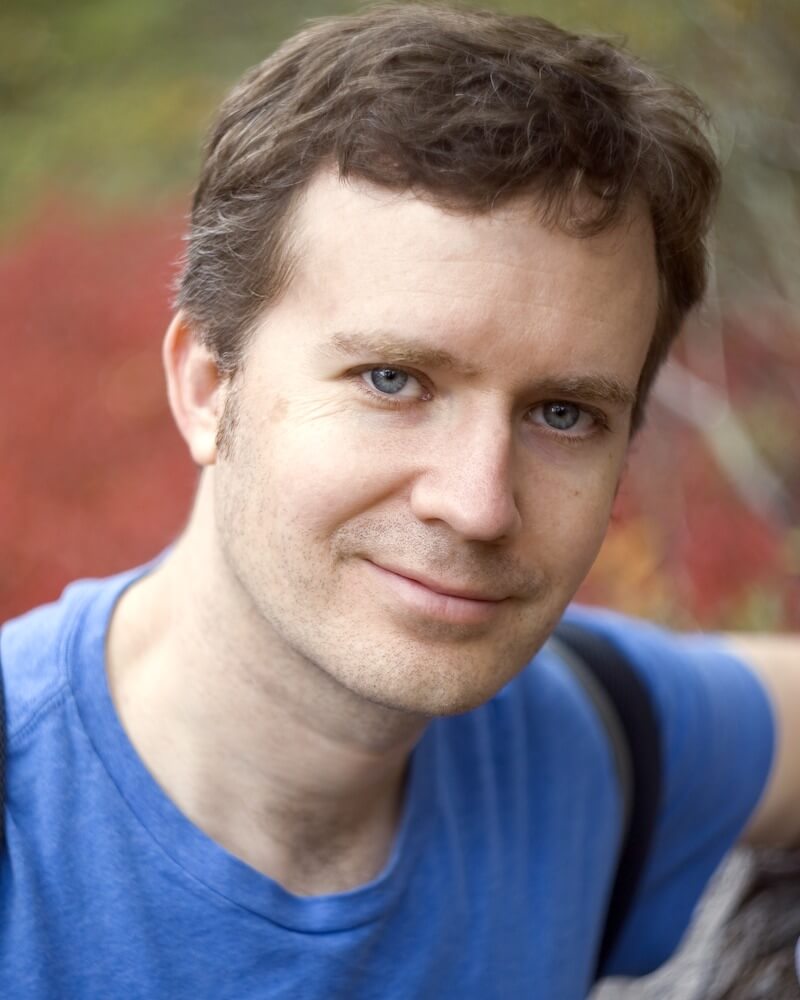
This a guest blog post and video created by Ben Miller, who is a Screenwriter, Filmmaker, Author and Classical fencer.
What are Indian Clubs?
Indian Clubs, as the name implies, originated in India, where oral tradition holds that they have been practised for thousands of years—a notion supported by ancient art, relief sculpture, and religious texts such as the Mahabharata.
Initially, the Indian club was used solely as a weapon, however, by the 13th century, Indian texts indicated that a form of exercise had arisen which was utilizing these clubs for the purposes of cultivating health and strength for its own sake, and which was no longer purely being used as preparation for self-defence or warfare.
Indigenous Indian Wrestlers and Athletes
During the 17th century, the British began to colonize India and observed the practice of Indian club swinging, performed by indigenous Indian wrestlers and athletes.
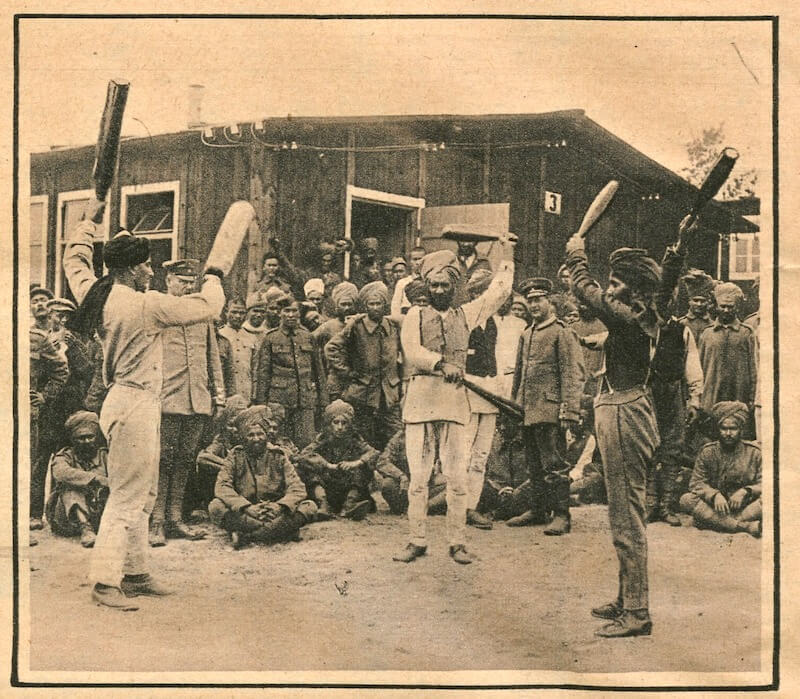
Prisoners of War swinging Mugdals (left) and Indian Clubs (centre & right)
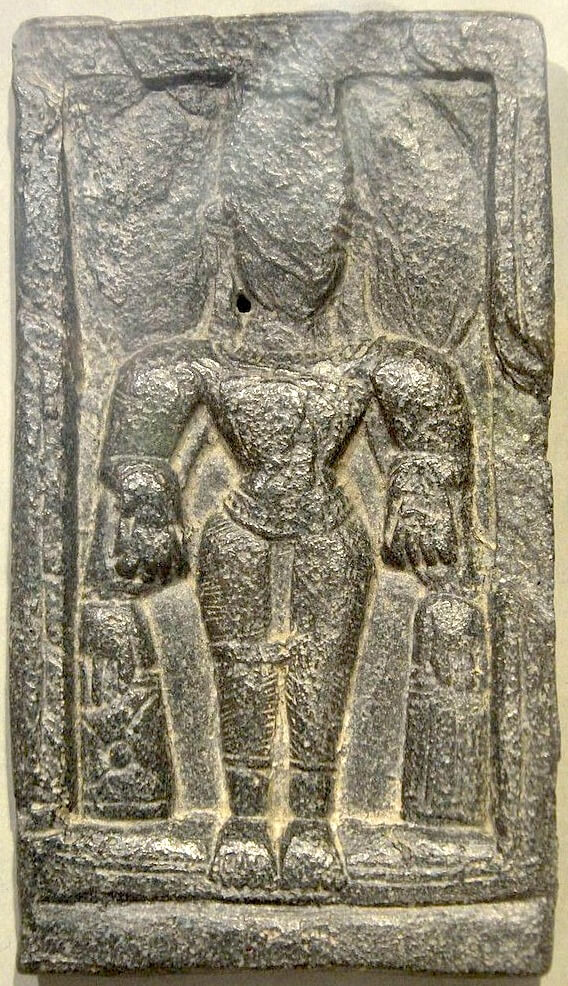
It was not until the early 19th century, however, as far as we currently know, that the British themselves began to practice club-swinging to any significant degree.
At this time, a version of the exercise was adopted by the British military as part of its training regimen, and by the 1830s, the practice had made its way to mainland Britain, where it quickly became popularized in physical culture circles.
Initially, these exercises strongly resembled the original Indian exercises, which used large, heavy clubs for the development of great strength.
Complex Movements
However, Europeans soon began to change and adapt these exercises, utilizing lighter clubs that could be wielded with greater speed and manoeuvrability, and which could be used by women and children as well as by male athletes.
These club-swingers devised increasingly fast, agile, and complex movements—methods which would be advocated by both fencing masters and champion boxers as adjunct training exercises.

Mapping Indian Clubs Circles
Boxers… to Schoolchildren… to Soldiers…to U.S. Presidents
What are Indian Clubs? By the 1840s, club swinging had spread to France and Germany, where, in the latter, it was adopted by the Turner physical culture movement. In the 1850s, club swinging began appearing in the United States, having been brought there by teachers from London and Paris.
In America, it became a popular and iconic exercise, taken up by everyone from boxers…to schoolchildren…to soldiers…to U.S. Presidents, and was even part of the required daily regimen at the famous Battle Creek Sanitarium, directed by John Harvey Kellogg, noted health reformer and inventor of American breakfast cereal.
So popular was the practice in the United States, that in the years 1889 to 1890, no less than eight different English-language texts on club-swinging technique were published.
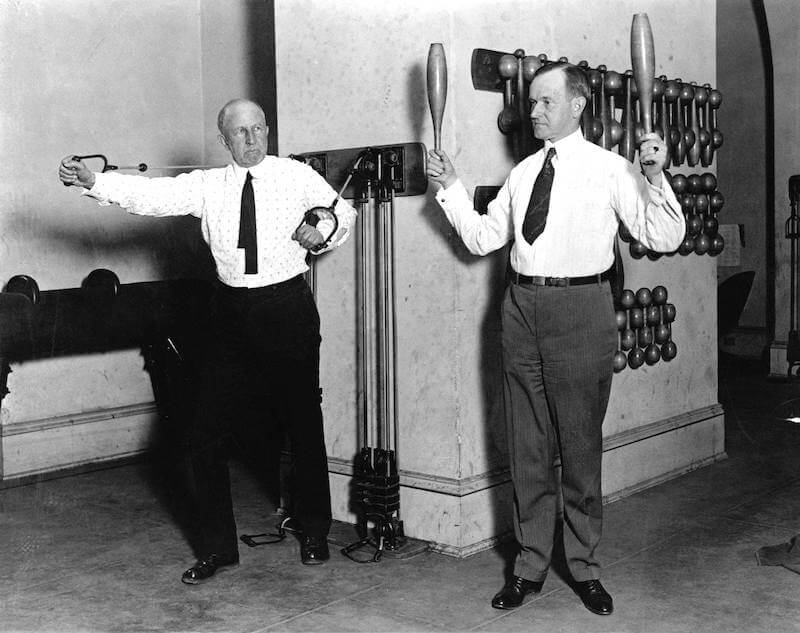
President Calvin Coolidge 1872-1933
An ill-shaped club is as unsatisfactory as an ill-balanced foil
In both Europe and the U.S.A., club swinging further developed, and took on a different character, being influenced by the physical culture ideas and aesthetics of the West.
Within the various countries, practitioners developed their own particular styles, grips, and techniques, which included approaches as unusual as practising outdoors in the nude, striking the club with both hands on the ground, and performing the various exercises all whilst standing on one leg.
Different countries also developed their own distinct designs of clubs, which were balanced and constructed to reflect the particular methods that they were intended to be used with. The shape and balance of these clubs were consciously and meticulously designed with mathematical precision.
As a prominent author of the period wrote: “An ill-shaped club is as unsatisfactory as an ill-balanced foil” and: “The point of greatest weight must be as nicely adjusted as that of a Damascus blade.”

Golden Age
At this time, during the late nineteenth century, a sort of “Golden Age” of European club swinging arose. Within the various regional styles, two major types of club swinging existed: heavy and light.
Although what was considered heavy or light varied greatly, being somewhat relative, generally speaking, heavy swinging used clubs between 3 and 12 pounds (and in some cases, even heavier) and focused on the building of muscular strength, used by strongmen and champion competitors. Light club swinging, on the other hand, used clubs between ½ and 3 pounds.
Poetry of Motion
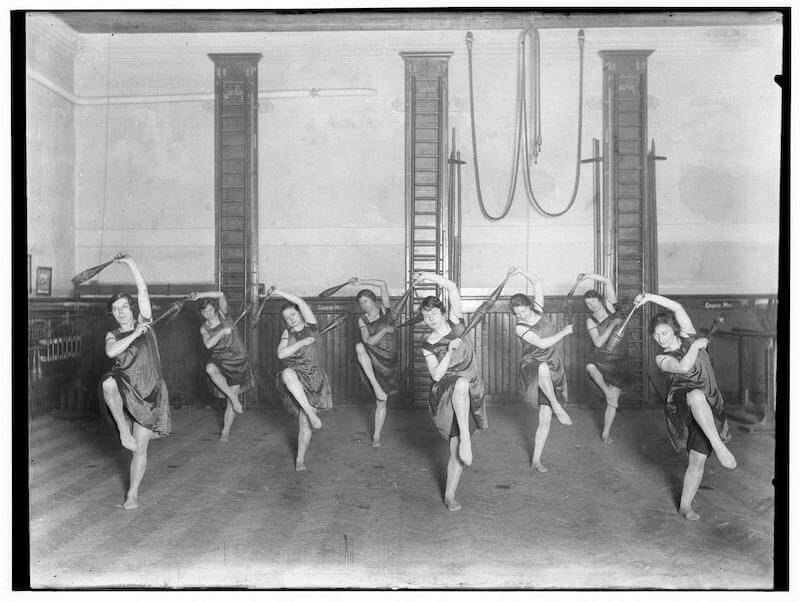
Poetry of Motion
The development of muscular strength was only one of its objectives. Light club swinging focused on the holistic development of body and mind, flexibility, ambidexterity, agility, neuromuscular control, circulation, breathing, rhythm, posture, the perfection of form, and elegance of action.
Even heavy club-swingers emphasized that club movements must be performed gracefully. The artistic beauty of the exercise, when done correctly, was described by authors as approaching “the poetry of motion.”
As practitioners soon discovered, the most difficult part of this type of club swinging was mental rather than physical. Daily sessions typically lasted from ½ hour to an hour, sometimes twice per day, and so the economy of motion, devoid of stress or strain, was key.
Endurance
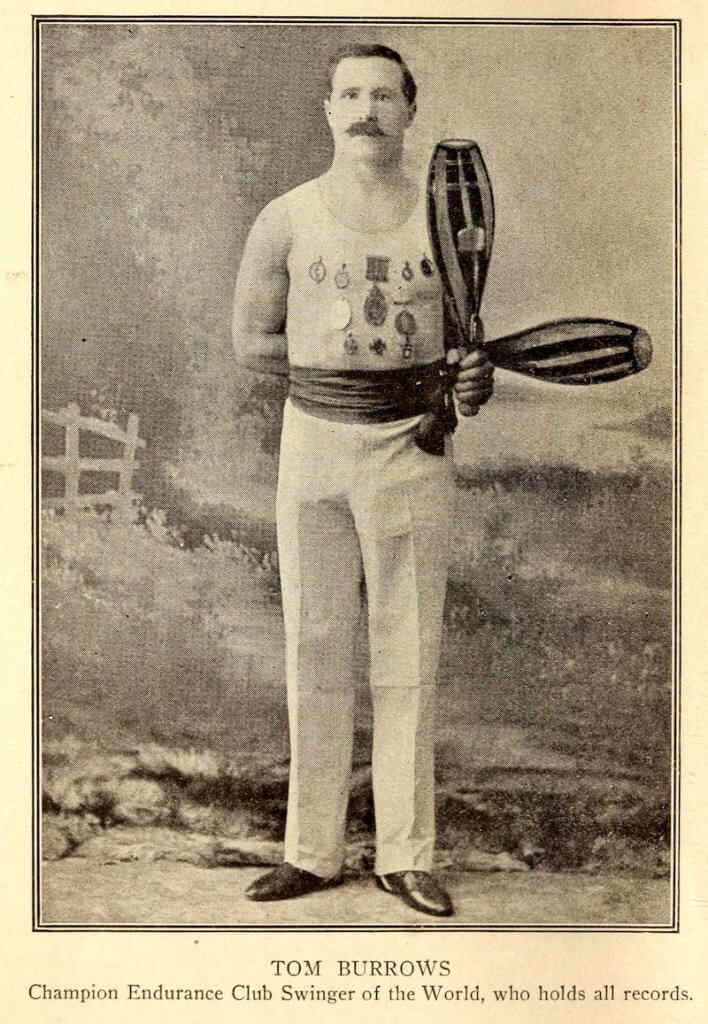
Some champions could contest for days at a time without break, the club-swinging record being more than 120 hours straight with absolutely no rest.
Health Benefits
The health benefits of Indian clubs were also recognized by doctors, who advocated and prescribed their practice to successfully treat and rehabilitate injured soldiers.
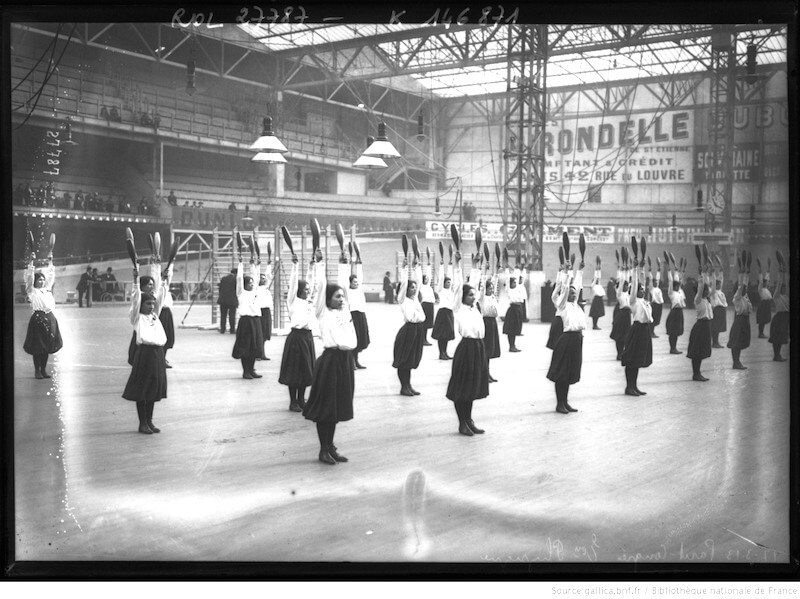
A Strong Mind in a Sound Body
During the late 19th century, club swinging also spread to Belgium, Austria-Hungary, and especially in Bohemia, where it was taken up by the Sokol gymnastics organization, which was founded upon the principle of “a strong mind in a sound body.”
The Turner and Sokol organizations would periodically hold festivals in which club-swinging was demonstrated by hundreds and even thousands of people in synchronized unison, accompanied by music.
The choice of the music itself was regarded as important and often consisted of waltzes, marches, and schottisches, which were said to exhibit the appropriate time and rhythm.
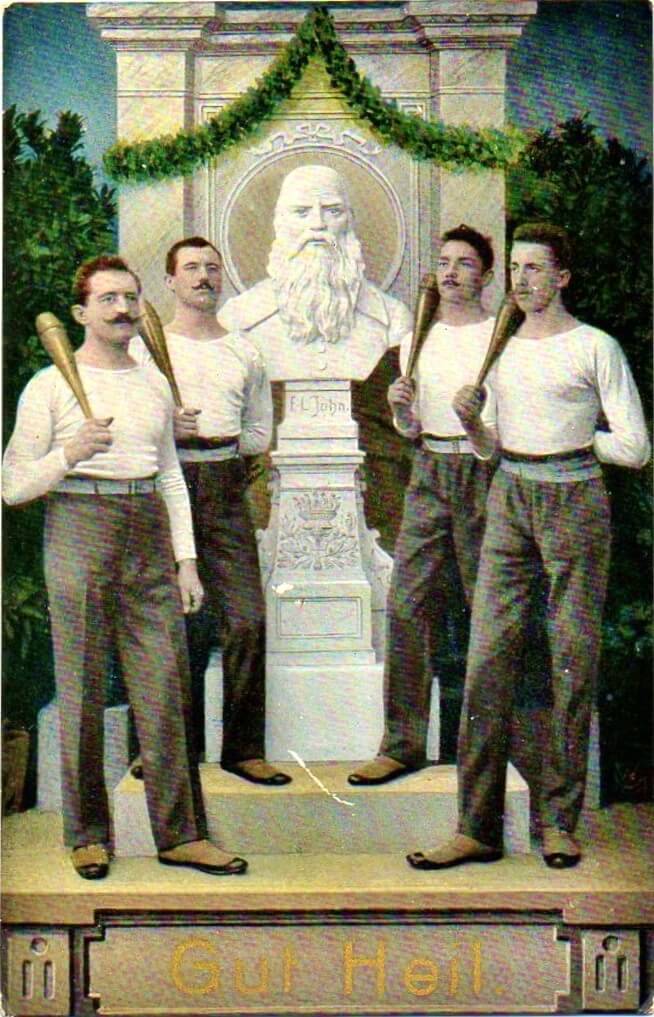
Ball and Socket Grip
During the early 1900s, club swinging continued to change. Previously, the techniques were such that practitioners could begin with light clubs, and then take up heavier clubs as they progressed in strength and proficiency.
However, during the early 20th century, heavy clubs swinging became less common, and many light-club swingers began to adopt basic grips that could only be used with light clubs—such as, for instance, the “ball-and-socket grip,” as it was known during the period.
With this grip, the club was twirled between the thumb and index finger alone, and the three remaining fingers were not used at all to articulate the movements of the club.
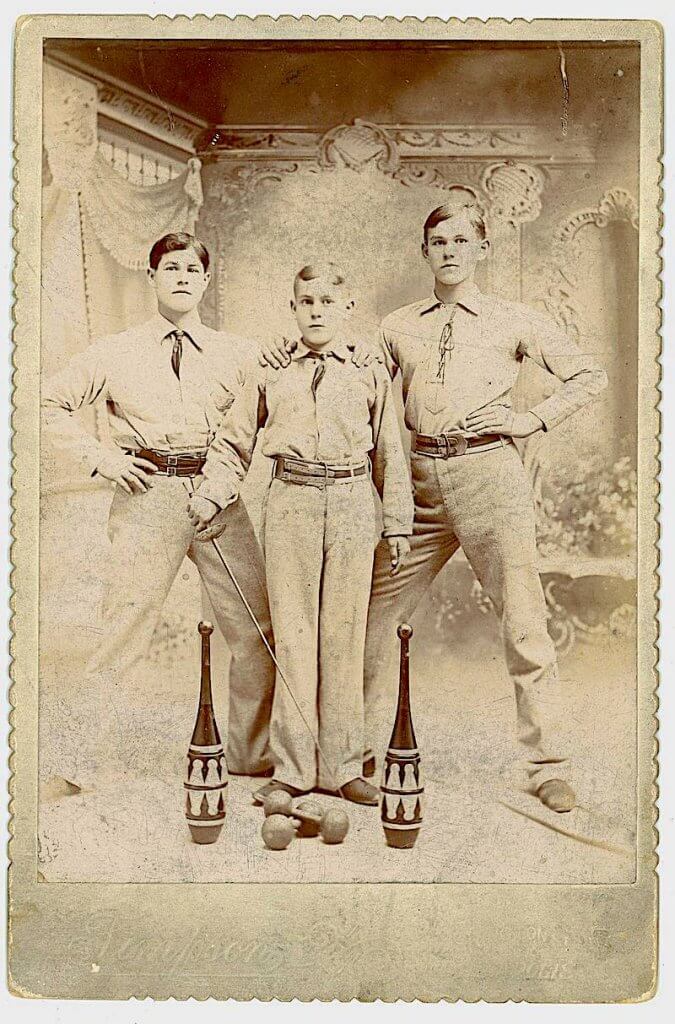
Film Footage
What are Indian Clubs? Despite such developments, if one searches, it is still possible to find film footage from the first half of the twentieth century of club-swingers rigorously adhering to traditional 19th-century form and technique—as can be seen in this clip of World War II allied soldiers.
Heavy Mace or Gada Swinging still Thrives
By the 1950s, club swinging had largely fallen into disuse, except in the case of elderly practitioners, and in certain places in Europe.
Some aspects of club swinging still survive today in the Turnvereins and gymnastic societies of the Germanic and Eastern European countries, where very light clubs are used—however, the practice has become more ballet-like, with the clubs used in the manner of a small baton, wherein the weight and momentum of the club is of little concern.
Likewise, in India, a surviving tradition of heavy mace or gada swinging still thrives, though it bears little resemblance to the late 19th century Western development of club swinging heretofore discussed. In Great Britain, and perhaps in other countries, a few traditional practitioners can be found.

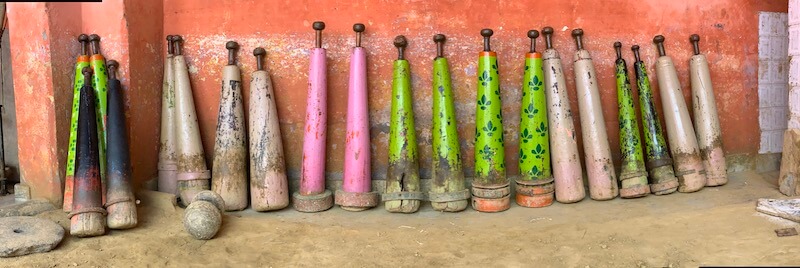
Body Building with Heavy Clubs
In recent years there have been attempts to resurrect the Western adaptation of club swinging. Marketed to a popular audience, and especially in America, the focus has tended to be on body-building with heavy clubs, strained resistance exercises, and the building of muscular strength, or, in many cases, merely advocated as a warm-up exercise.
In such cases, practitioners are likely not receiving the full mental-physical benefits traditionally imparted by Indian club practice, as enumerated by the authors of previous centuries.
Excellent work with Indian Club Swinging
What are Indian Clubs? However, a small but growing number of individuals throughout the world are doing excellent work with Indian club swinging. It is the hope of this narrator that men, women, and children can once again benefit from the practice of Indian Clubs.

I would like to thank Ben Miller for presenting his video and providing the photographs for this post.
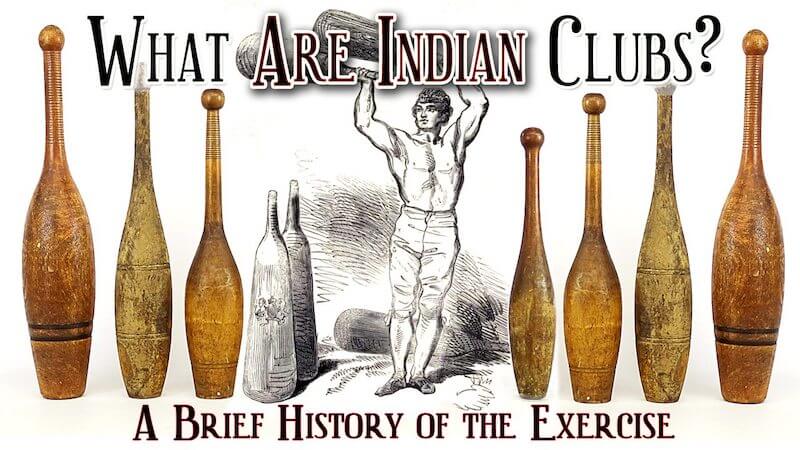

I hope you well Paul, if you have the opportunity to tran with Paul then grab it with both hands his a genius ❤️🙏
Thank you for your kind words Christopher
Very interesting!! I’m surprised the circus was not mentioned… jugglers use those moves with clubs A LOT! And also swing poi technique its very similar, must have some influence! I’m curious now…
Hi Vera,
To the best of my knowledge, juggling with clubs was an offshoot of Indian Club swinging. I agree with you that poi techniques are very similar. The main influence and I stress the main influence on club swinging comes from sword fighting techniques.
Thank you for your excellent website about Indian Clubs. We are in the process of writing a book about the South Asian Health Crisis and wanted to include a link to your website and use the first photo on this page in our book. Could we have permission to do this.
Best,
Mubin Syed, MD
Hi Mubin,
Thank you for your inquiry, you can go-ahead as outlined in your message.
A really excellent article from which I learned a great deal, so thank you. I was given old clubs by my grandad (a WWI soldier) as a child nearly sixty years ago but we had no instruction books and thus progress was limited. Today I love the clubs and of course detailed inspiration can be found easily on the internet. The long history described above is fascinating and adds to the palpable pleasure of swinging good clubs. Best wishes, John D.
Hi John, I’m delighted to hear that you enjoy swinging your Grandfathers Indian Clubs. Best regards. Paul